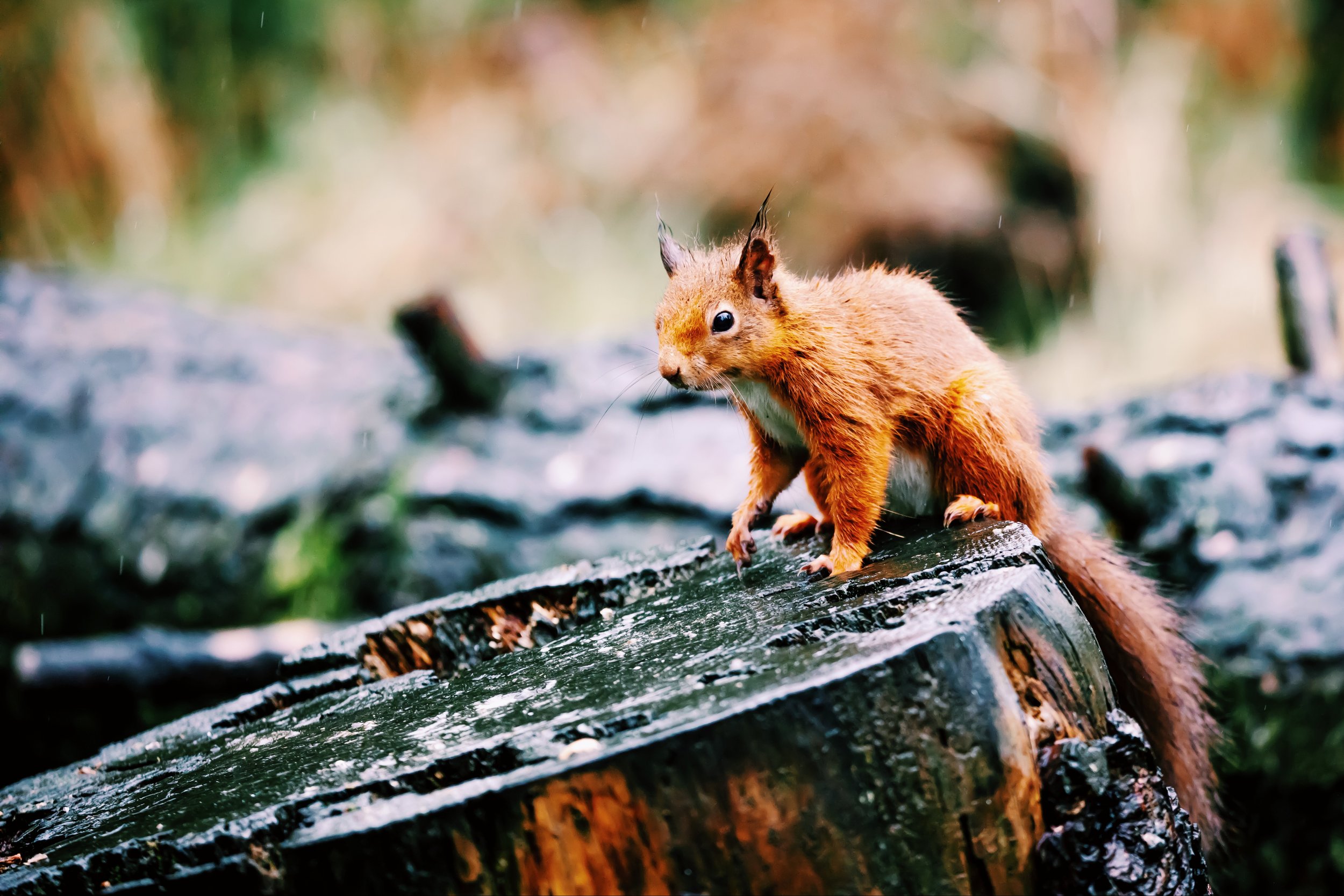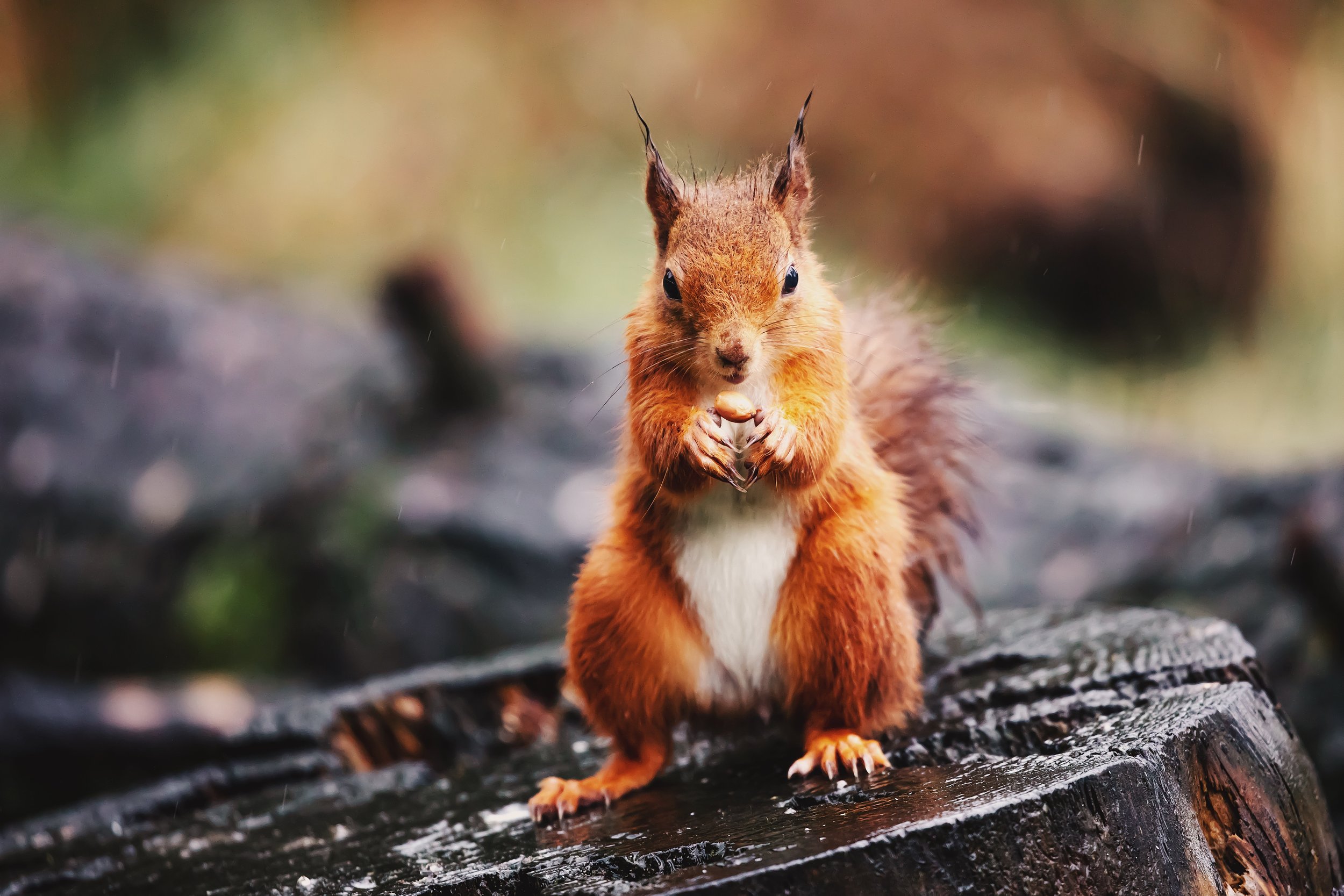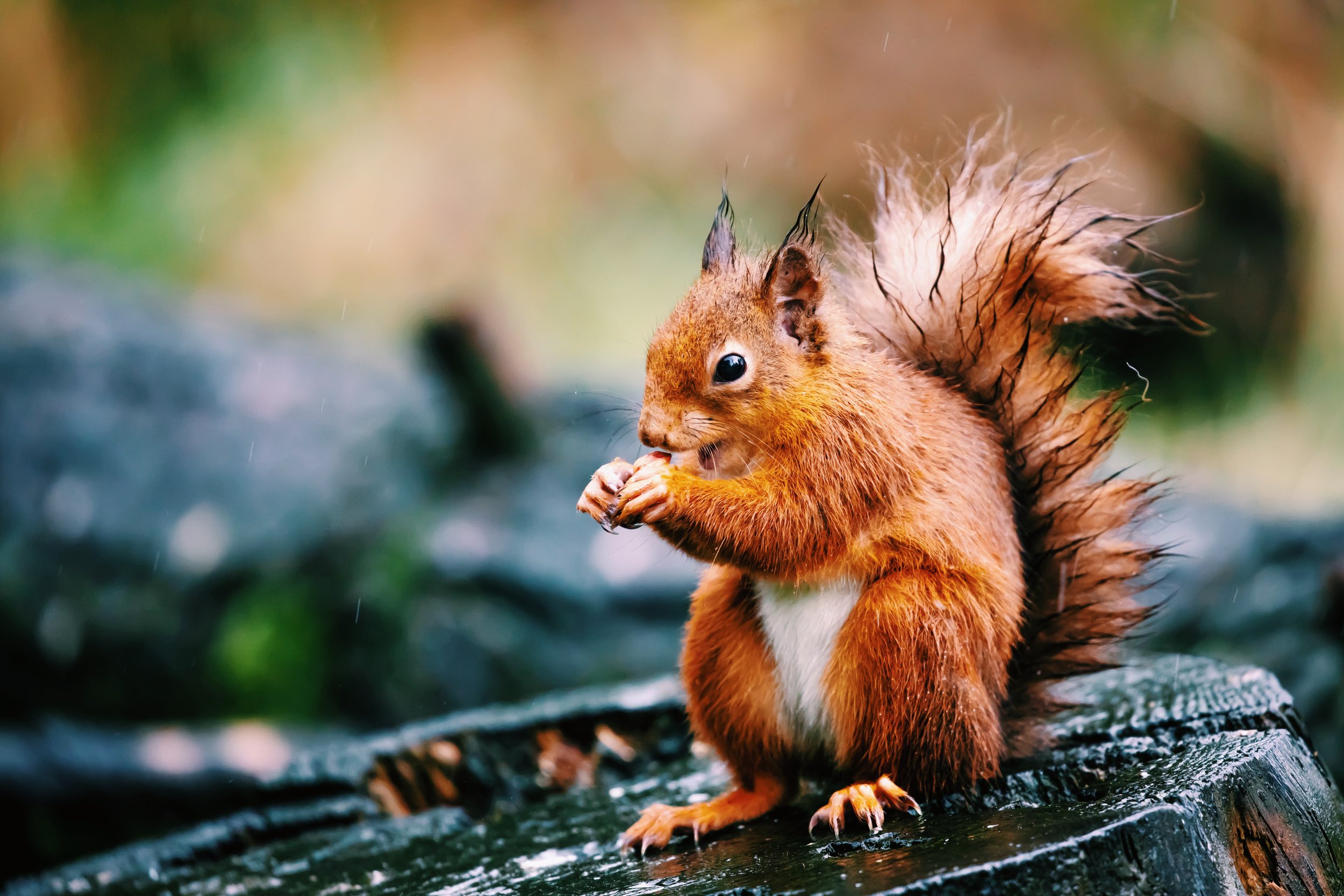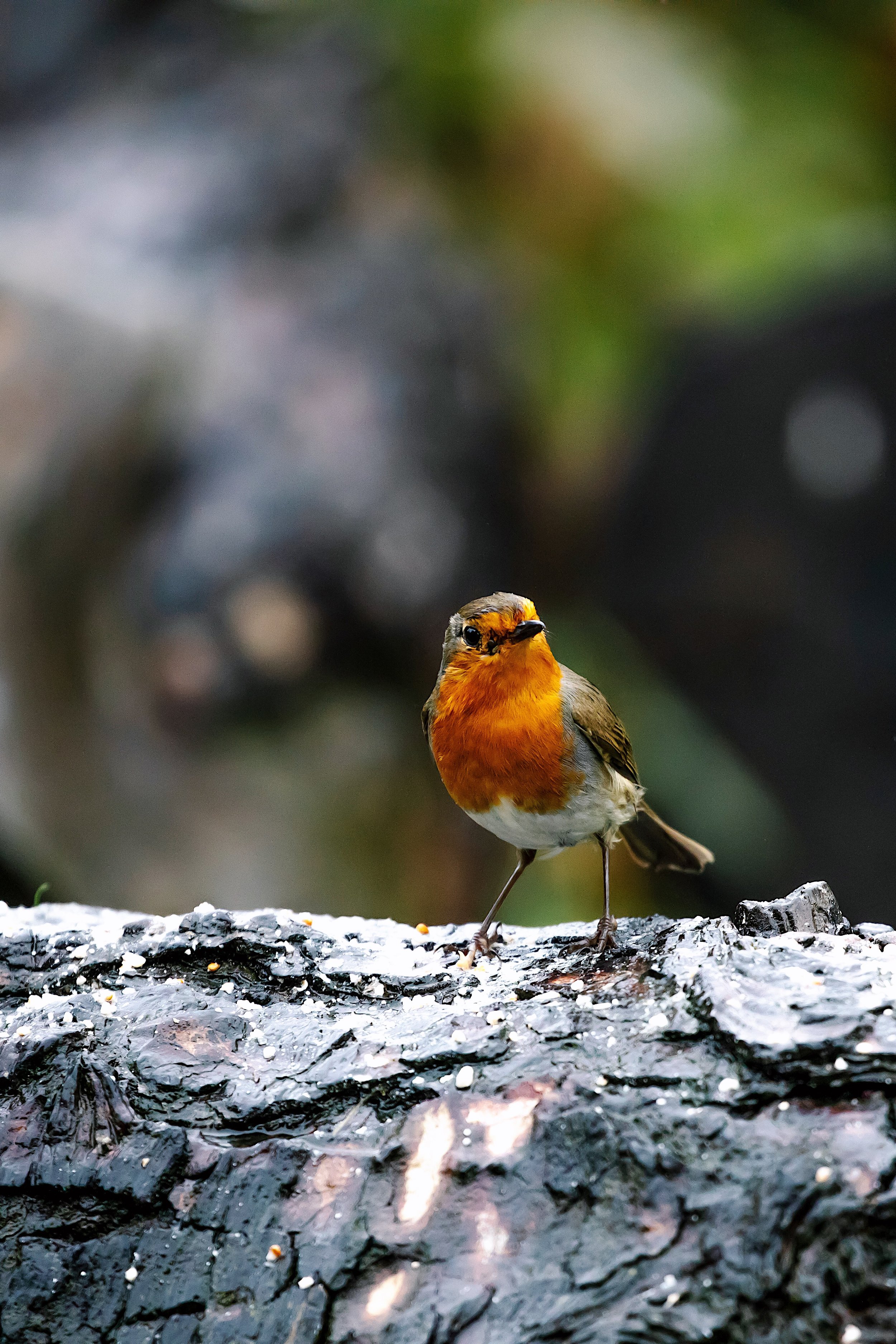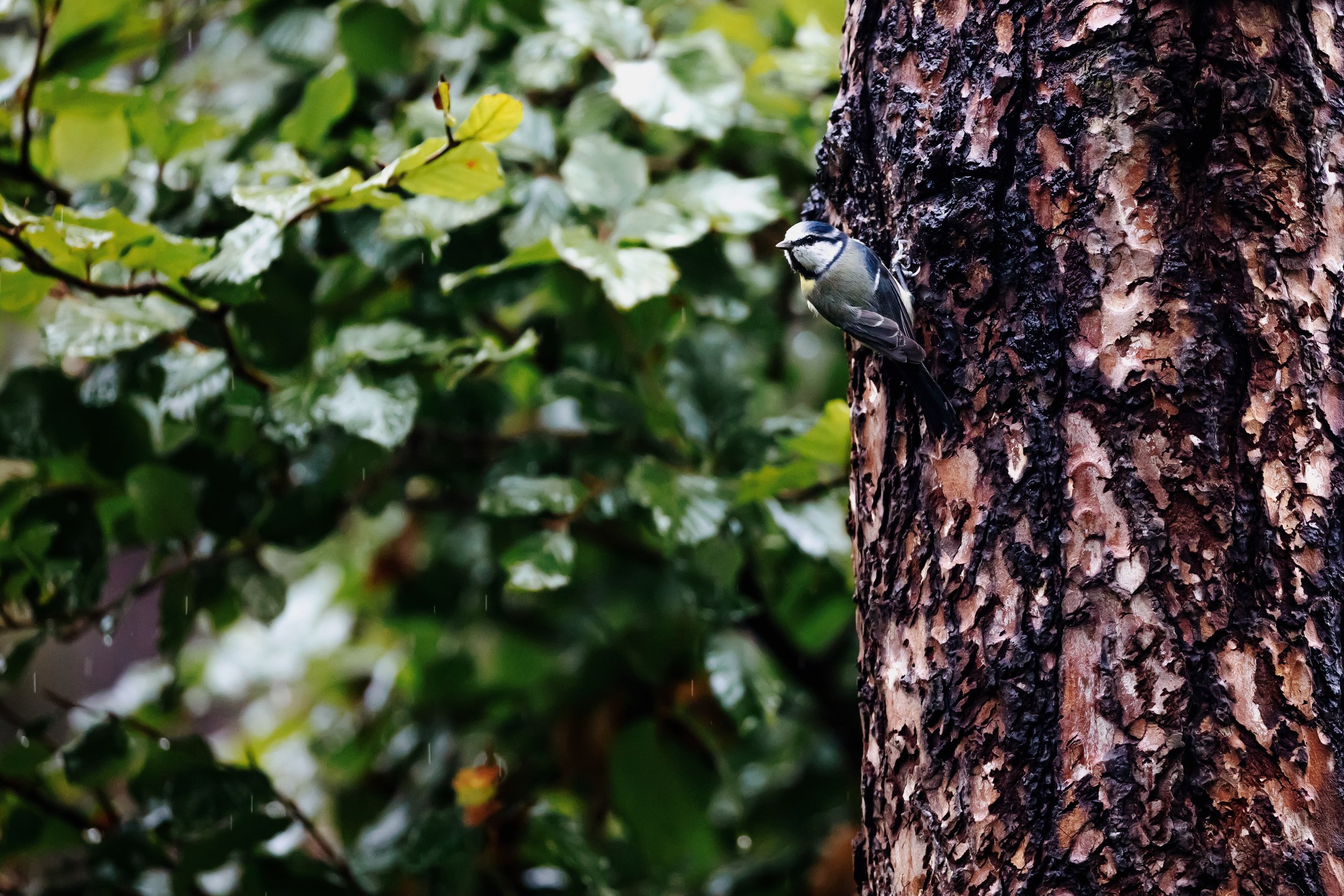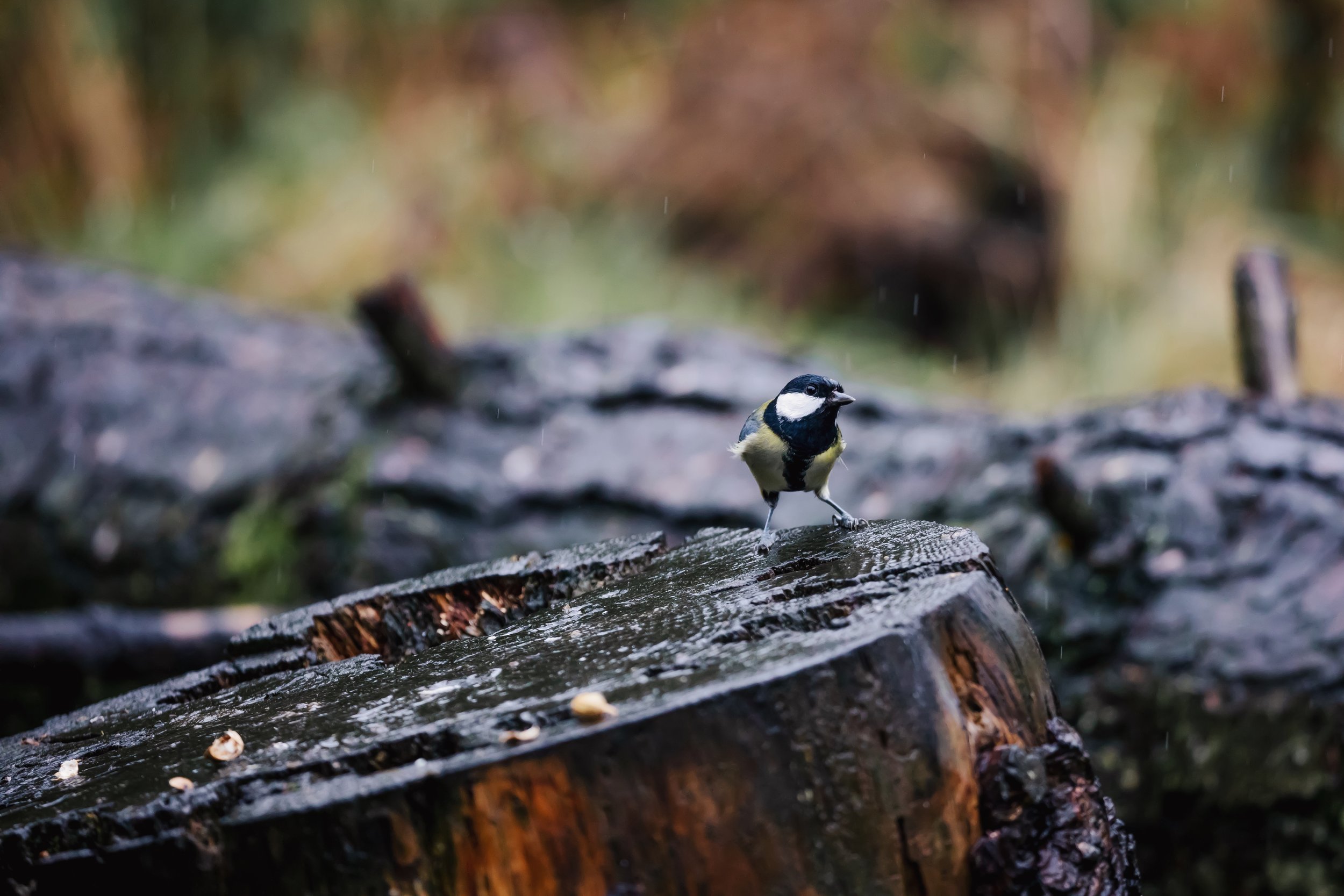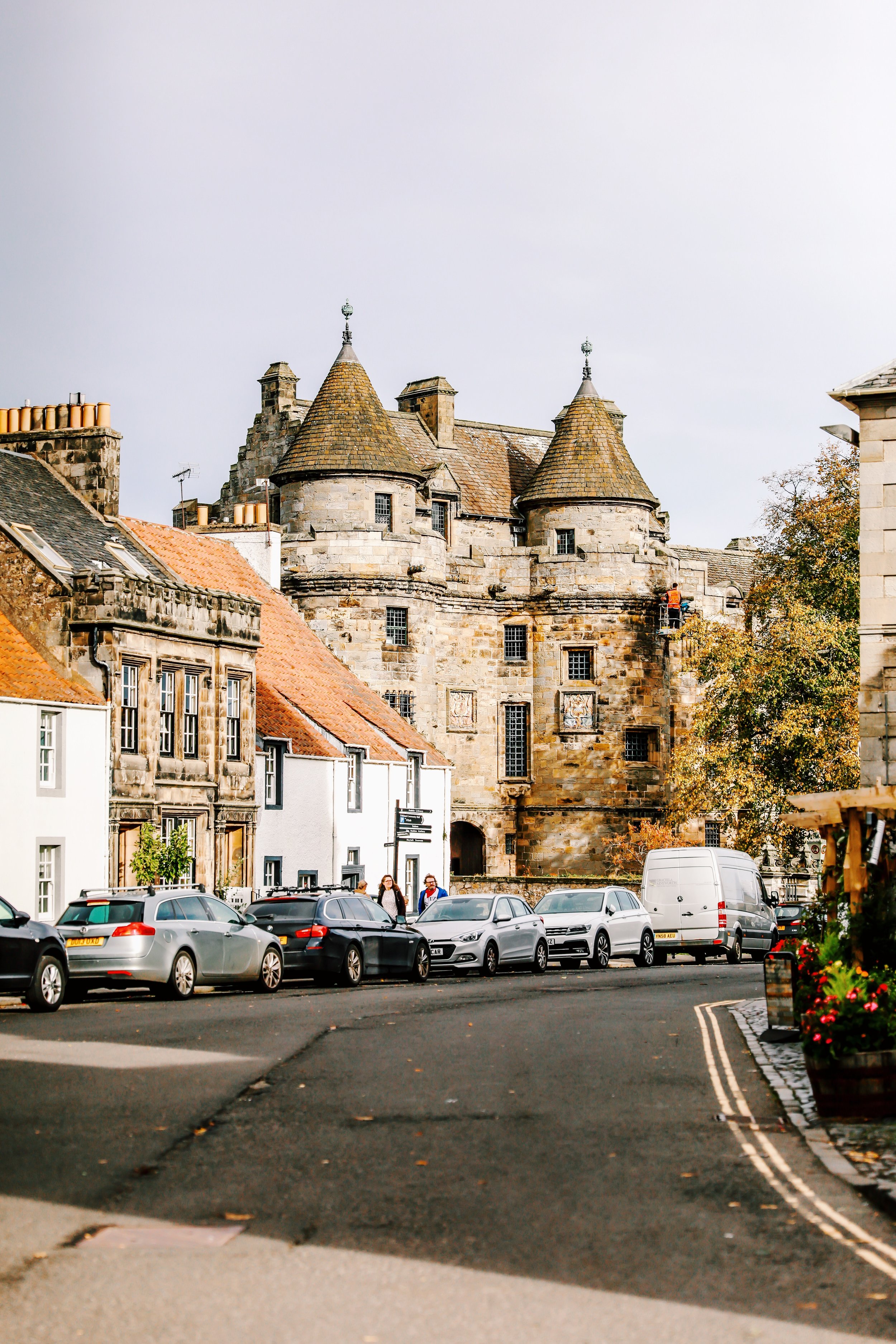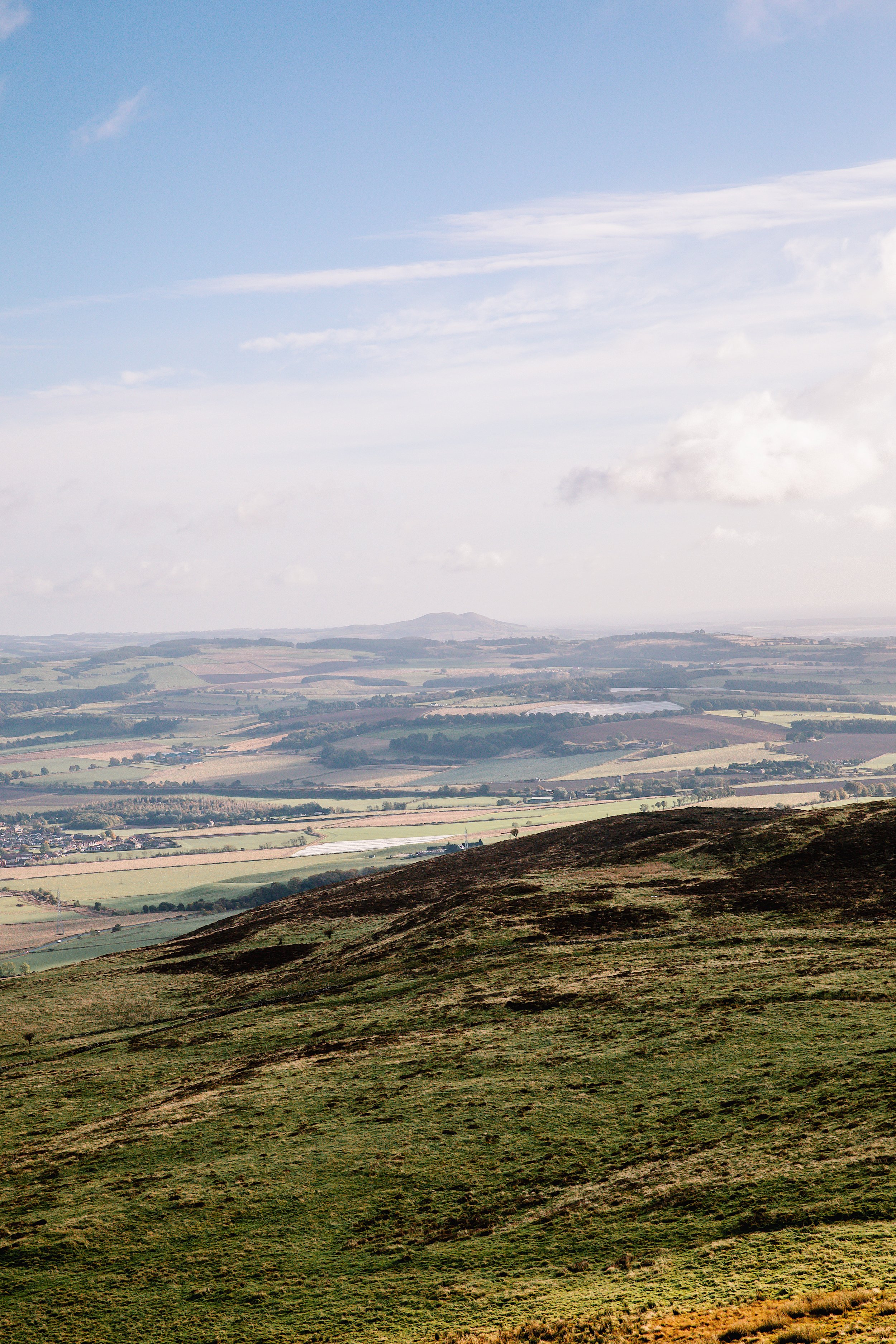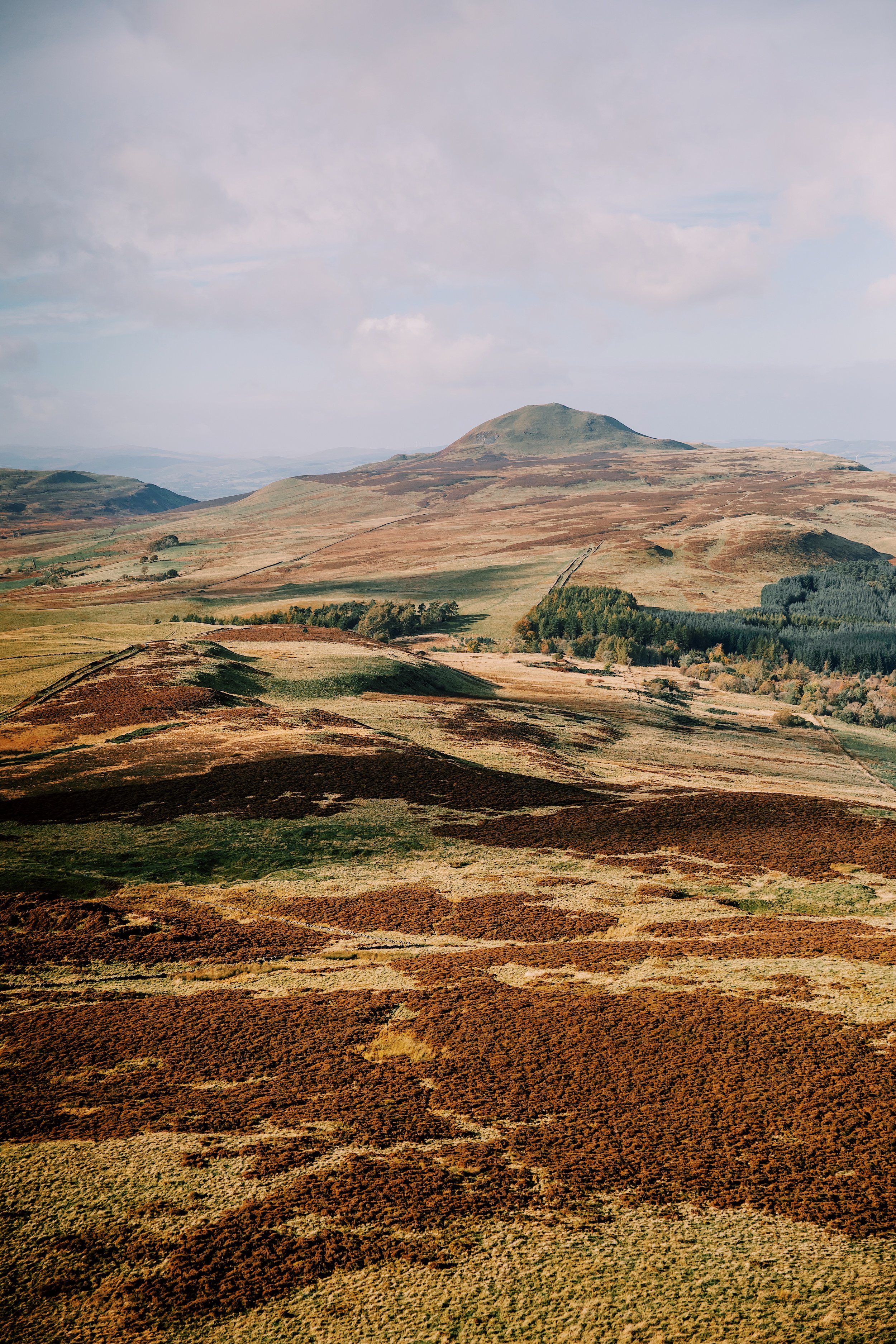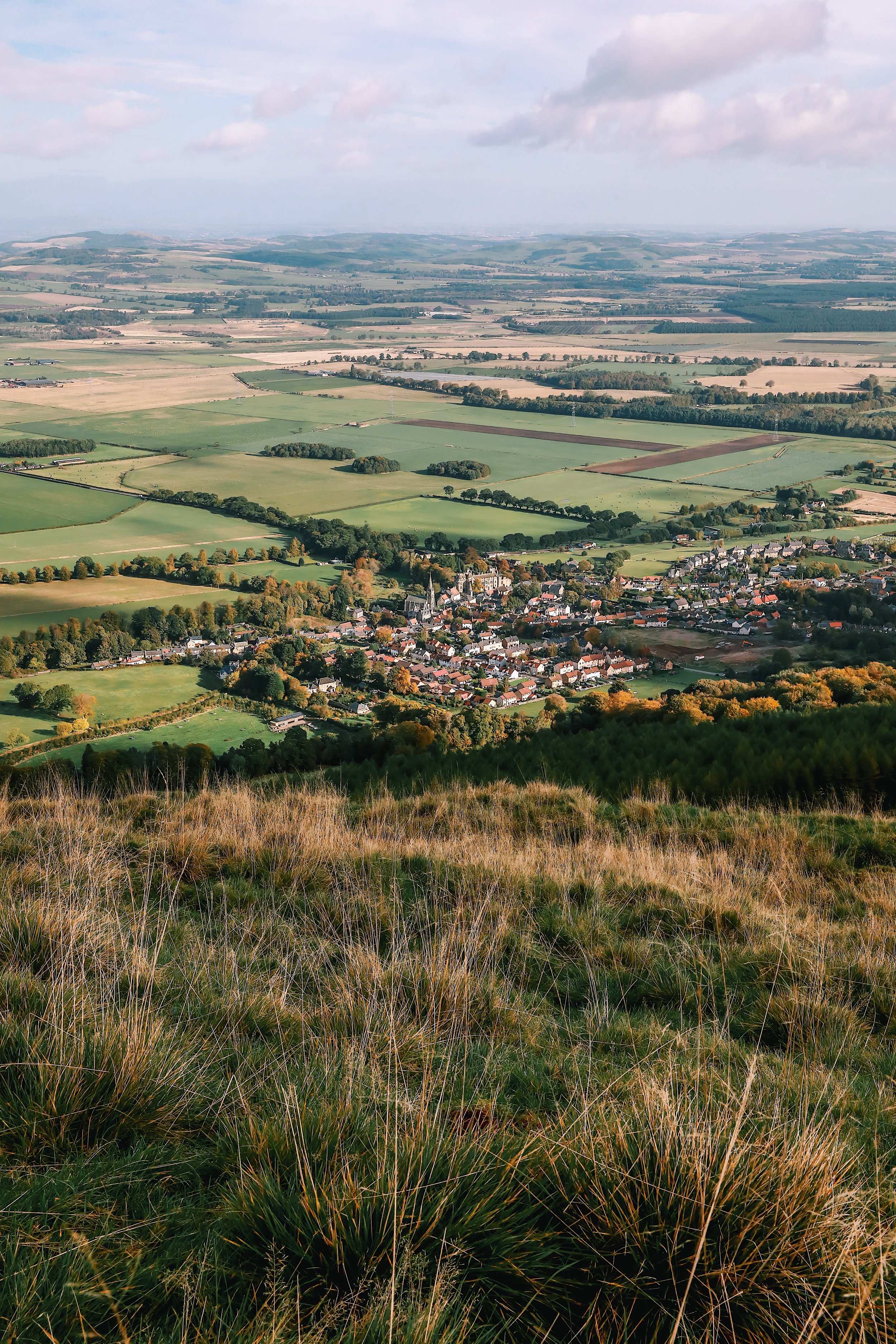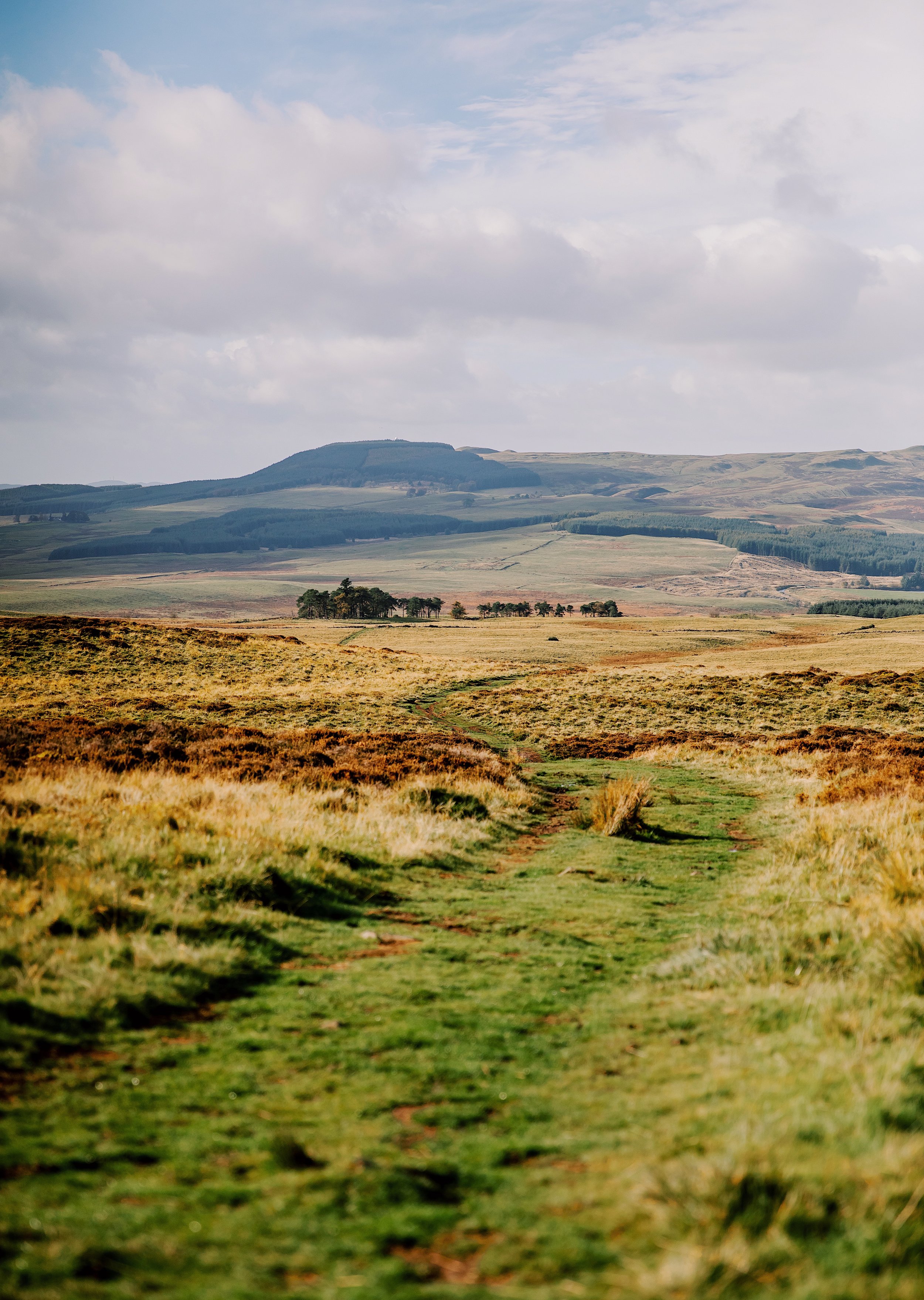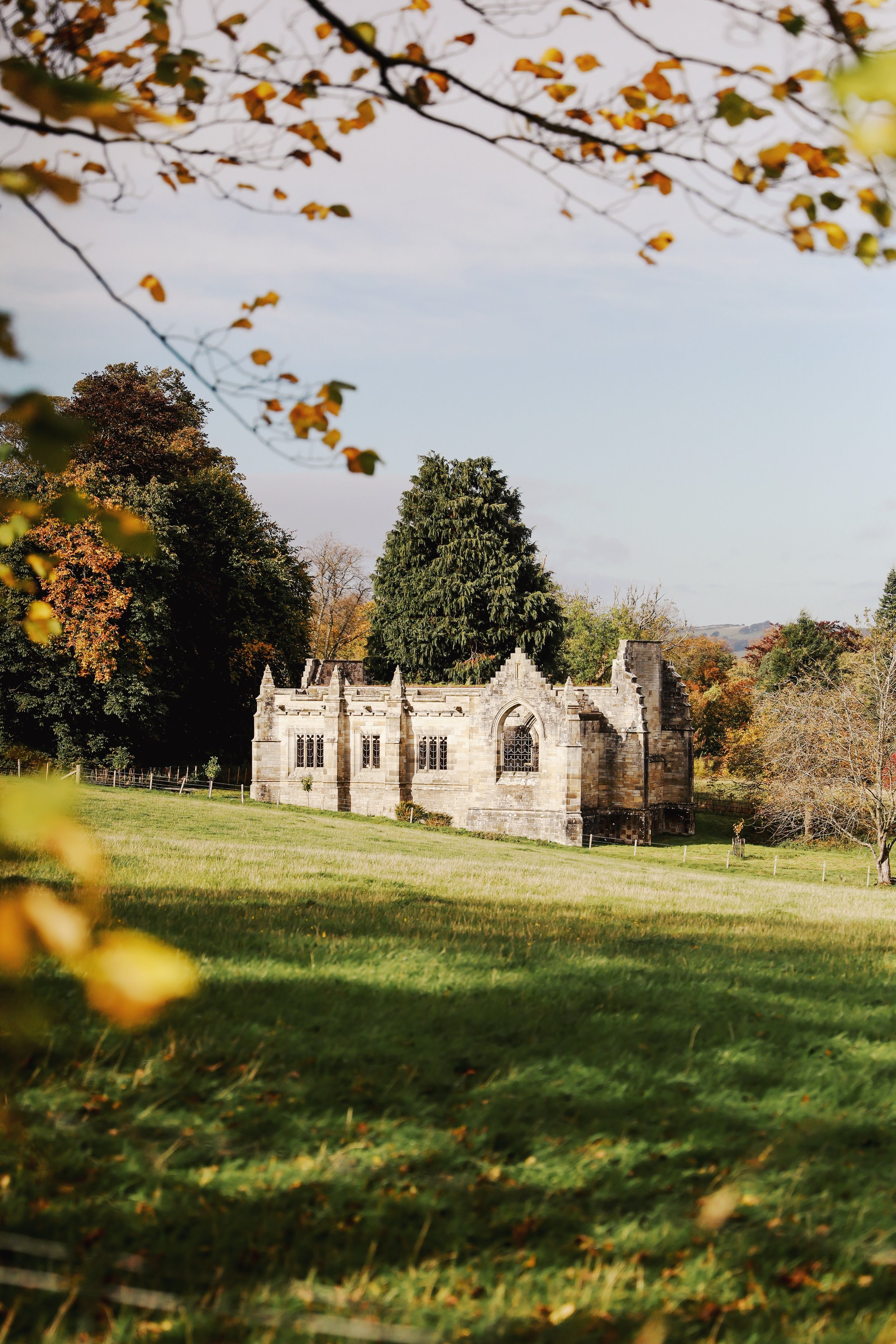The Kingdom of Fife is full of treasures, beautiful towns like St Andrews and the East Neuk are the popular destinations but there are also many other hidden gems to explore. These include ancient volcanic plugs, forests and stunning street art. I spent three days exploring Fife this autumn. While there, I visited some of these pretty towns, stunning coastlines and picturesque upland landscapes.
Towns and Villages
I was based in Cupar, which was great as it is a nice central location for exploring the county. My accommodation was the historic Cupar Burgh Chambers. This stunning building has undergone a massive restoration project in recent years and takes centre stage at the heart of Cupar’s Georgian townscape.
On the first day of my trip I stopped in Cowdenbeath to admire the wonderful Street Art created by local artist Kerry Wilson. There are numerous paintings all along the high street on the shop shutters but it’s the large murals which are the most striking. There is a mural of a wee boy playing with his toy car and opposite this, a 30ft high painting of a local girl called Lucie. Both of these artworks are beautiful but my favourite of Kerry’s murals is located at Brunton Square. This mural depicts a young boy in a mining hat and over sized boots. This mural pays homage to Fife’s mining heritage.
A few miles from Cowdenbeath lies Lochore Meadows Country Park. During the 20th century this area of land was a coal mine but today it is Fifes most popular free outdoor attraction. The Country Park covers 1200 acres and offers a range of activities including walking, water-sports, golf, cycling, fishing and great play-parks for children. It’s a really pretty area especially during the autumn months as the colours are so vibrant and beautiful.
St Andrews is not only Fife’s most famous town but also one of the most well known towns in Scotland, and it is easy to see why. It’s located on the coast and has it’s own beach, the old streets are lined with beautiful architecture including the Gothic St Salvator’s Chapel, St Andrew’s Cathedral, St Andrews University and St Andrews Castle. Not to mention it’s also known as the ‘home of golf’ and boasts some of the best golf courses to be found in the world. On my visit I took in the views of the castle and wandered along the pier which offers lovely views out to the North Sea. This must be an incredible place to watch a sunrise.
The East Neuk of Fife has some of the most photogenic villages and harbours that I’ve seen in Scotland. The word ‘Neuk’ is the old Scots word for corner and refers to the eastern edges of the county. These quaint villages have stood here for centuries protected by the natural harbours of the coastline against the might of the North Sea. The village harbours have impressive sea walls adding extra protection during winter storms. These walls are fun to walk along during calm weather and offer great vantage points to capture photographs of the harbours and the seascape. Fishing was the backbone of these villages for hundreds of years, but sadly the industry has declined in recent years. In the past local fishermen would return to shore with nets full of herring but nowadays you are more likely to see fishermen landing shellfish on the piers. This does mean that a lot of local restaurants have wonderful fresh seafood dishes on their menus. If you would like to find out a little more about the history of fishing in Scotland you can visit the Scottish Fisheries Museum which is located in Anstruther.
If you are exploring the East Neuk it’s worthwhile taking a slight detour to the picture perfect inland village of Kilconquar just north of Elie. There is something old-worldly about this village which dates back to the 12th century. There is a loch in the village which today is a peaceful place to relax and spot wildlife but this loch has a macabre past. It is thought that ‘witches’ were drowned here during the Scottish Witch trials of the 16th and 17th centuries.
The Coastline
Fife’s coastline is really special with the afore mentioned fishing villages, sea views and stunning beaches. Fife also has Scotland’s longest continuous coastal path. The total length of the path is 117 miles and completing the entire route would be the perfect challenge for keen walkers and outdoor enthusiasts. However, if like me you enjoy something a little less challenging, exploring a couple of sections at a time is probably the way to go. The route allows you to walk from village to village and visit some stunning beaches along the way like this one at Kingsbarns.
Many of Fife’s towns and villages have their own beach, a perfect example of this is Elie. At low tide the golden sands stretch for almost a mile connecting Elie Harbour Beach to Elie Earlsferry Beach. This beach has won awards and it’s easy to see why. At the western end of the beach there are beach huts and sand dunes making it a great place for photography. The waters here are also relatively sheltered making it a popular place for water-sports.
My visit to Tentsmuir National Nature Reserve near Tayport was one of the highlights of my trip to Fife. The landscape here is incredibly diverse with its ever-changing scenery. I started my exploration of the reserve at Tayport and walked along the mudflats inhabited by a variety of seabirds. Leaving the sands I then proceeded to walk through the Heathland and into the forest. I found the woodland here to be so beautiful and even on a grey day the forest was vibrant with the autumnal foliage.
My destination was Tentsmuir Point and after a couple of miles I emerged from the forest onto the dunes and the beautiful expanses of sand. This is a popular places for common and grey seals during the breeding season as it’s a safe place for them to raise their pups. They sometimes come right up to the dunes but they are mostly found on the point itself. If you are lucky enough to see the seals it is imperative not to disturb them particularly when they have young. Females can abandon their young if the are spooked or disturbed, the chances of an abandoned baby surviving is very slim so it’s vitally important to observe their charm from a safe distance.
As I mentioned Tentsmuir National Nature Reserve has a delightfully diverse landscape. If you travel inland a wee bit you’ll find Morton Lochs, this area is alive with wildlife. This area is a patch work of woodland and lochs and is the perfect place to visit on a rainy day as you can shelter in the wildlife hides or take cover under the trees. I find watching wildlife incredible relaxing and if you do too this is definitely the place to visit. I wasn’t there more than 10 minutes until I spotted a red squirrel bouncing around between the trees. Seeing these creatures is always a real treat but also a challenge to photograph as they move so quickly. A wee bit of patience is required.
Squirrels aren’t the only mammals that you can spot in and around Morton Lochs, badgers, foxes and otters also call this place home but you might need a bit of luck to spot them. If you come early in the morning you’ve got a good chance of spotting deer prancing through the forest. There is a wide variety of bird life here too and there are a couple of hides around the loch to sit back and observe them from. If you are super lucky you might spot a Kingfisher.
Lomond Hills
On the final day of my trip the I drove inland to the Lomond hills, these hills are sometimes referred to as the Paps of Fife, and are the highest hills in the region. The two prominent peaks are East Lomond and West Lomond, which are the remnants of volcanic plugs. I decided to climb East Lomond as I’d heard the summit gave the best views of the region. The walk begins in the pretty village of Falkland. Outlander fans may recognise this place as it covered for Inverness in the first season of the series but there is so much more to this village than a location in a popular TV series. One of the best examples of French renaissance architecture in the UK is Falkland palace, this beautiful building was a favourite of Mary Queen of Scots and it is easy to see why. As well as being surrounded by beautiful gardens, it also possesses the oldest Royal tennis court in Britain, built for King James the V.
East Lomond is around 448 meters, more or less half the height of a small munro. The ascent is reasonably steep but manageable. My 71 year old Dad joined me on this trip and he climbed the hill with me so it’s a great hill to climb if you’re not super fit. The climb gives you a sense of achievement, adventure and the opportunity to view the landscape from a different perspective without being too much of a challenge in comparison to larger hills. The toughest part is probably the first half, the track climbs up through the trees and feels a little laborious however, once the tree line is cleared the views are fabulous especially in the autumn sunshine. The summit looks over the entire Kingdom of Fife, all the way to the coast.
We descended the hill and headed towards West Lomond, it’s around 3 miles to West Lomond from East Lomond but we didn’t have time to climb this hill as well so we cut down off the track and headed back to Falkland just in time for lunch.
This marked the end of a wonderful trip to Fife. I’d seen such a wonderful variety of scenery, wildlife and townscapes over the few days I was there but I feel I only scratched the surface of what this part of Scotland has to offer. I found Fife to be a really enjoyable place to visit, whether walking along the beach listening to the sea lapping against the sand or taking the time to wander around the nooks and crannies of the old fishing villages, Fife has something to offer for everyone. I can’t wait to visit this area for another trip in the new year.



























